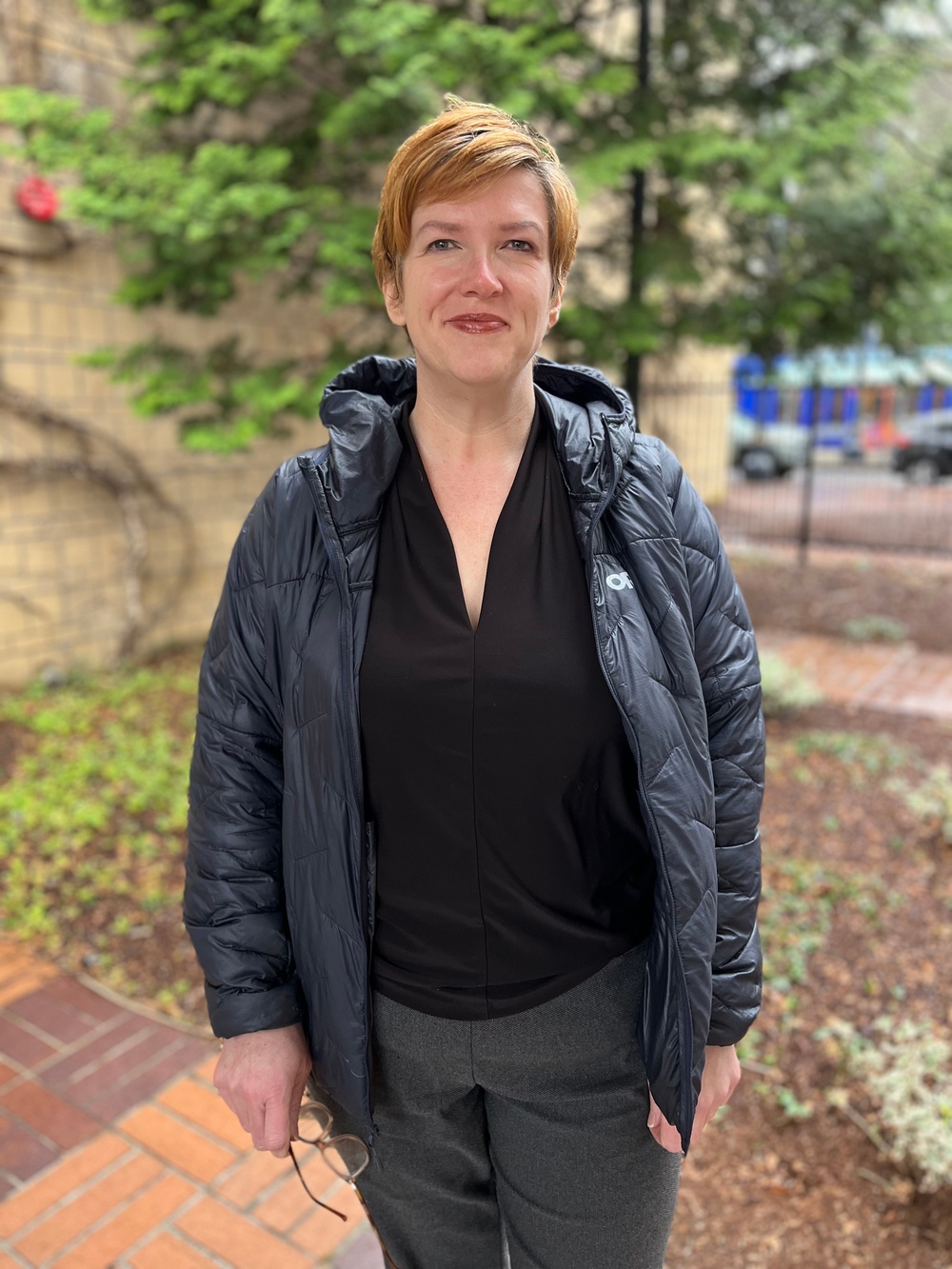DVIDS – News – There and Back Again: A Salmon’s Tale in the Pacific Northwest
Some fish live in freshwater streams and lakes. Other fish live in the ocean, in saltwater. Then there are salmon who do both.
Salmon are anadromous, meaning they live part of their lives in freshwater and part in saltwater.
The life cycle of a salmon can be thought of as a long journey to the ocean and back again. In the Pacific Northwest, salmon start their lives in the freshwater rivers of Washington, Oregon and Idaho. As they mature, they travel to the Pacific Ocean, where they grow bigger and stronger before traveling back up the rivers, sometimes over hundreds of miles, to spawn and create the next generation of salmon to start the cycle over again.
Hatching in the Hatchery
In Idaho, on the north fork of the Clearwater River, eggs and milt are collected from returning adult salmon at the Dworshak National Fish Hatchery (DNFH).
In the wild, fertilized eggs would lay in rocky streambeds until they hatched. In hatcheries like DNFH, fertilized eggs are placed in incubation trays with circulating water. Temperature is closely regulated to keep the eggs healthy and growing at an appropriate rate.
When salmon hatch, they do not need food right away. Newborn salmon are called alevin, or sac fry, because they are still attached to their yolk sacs. This yolk can sustain them for several weeks before it is completely absorbed.
In the hatchery, the sac fry are kept in their incubation trays until the egg yolk is completely absorbed.
“Once the egg sac is absorbed, they look like there’s a zipper up their center. Once they’re ‘zipped up’ that’s when they get moved into the nursery,” Jeremy Sommer, Nez Perce Tribe Hatchery Manager for the Dworshak National Fish Hatchery, said.
When the young salmon, now called fry, are moved to the nursery, it means they are old enough to need food. At first, the fry are so small their food is the consistency of dust. However, as they grow, they are fed larger and larger pellets. While in the nursery, fry are kept in water from the Dworshak Reservoir, like they were in the incubation trays. This water protects them from diseases and pathogens in the river water during their early and most vulnerable stages of life.
“We’re using reservoir water from above the [Dworshak Dam]. This helps us manage around the disease IHNV [Infectious Hematopoietic Necrosis Virus], which has plagued the facility for years. We’ve managed pretty successfully for about a decade,” Mark Drobish, U.S. Fish and Wildlife Service Hatchery Manager for the Dworshak National Fish Hatchery, said.
Once they are big enough, the young salmon are transferred to outside raceways or Burrow’s ponds, where they have more room to move and grow, transitioning from fry to smolt. Eventually, the smolt switch from reservoir water to river water. Once the smolts reach a certain size, about 5.8 fish per pound, they are released into the river to begin their trip to the ocean. Hatchery releases at the Dworshak National Fish Hatchery typically take place in late March and into April.
“We raise millions of fish. We are one of the largest steelhead facilities in the United States,” Sommer said. “We work as a team to raise about 2.1 million B-run steelhead…. We also raise 1.65 million spring Chinook salmon that get released here. We also transfer another 400,000 juvenile Chinook to the Nez Perce Tribal Hatchery for grow-out to be released as smolts. The Nez Perce Tribe also raises Coho at the facility as part of the Coho Restoration Project.”
Hitching a Ride
From the hatchery on the Clearwater River, it is approximately 500 miles to the Pacific Ocean. As the smolts make their way downriver, they navigate the currents and avoid predators like birds and larger fish such as bass and northern pikeminnow. According to the U.S. Fish and Wildlife Service, a young salmon’s diet might consist of zooplankton, insects and small crustaceans.
About 70 miles downriver, the smolts encounter Lower Granite Dam, the first of many dams between them and the Pacific Ocean. As they approach, the smolts have multiple ways to pass through or over the dam. Some go over the spillway, or spillway weir, which acts like a fish waterslide over the dam. Smolts can also pass the dam through the juvenile bypass system, which takes them to the Lower Granite Juvenile Fish Facility (JFF).
At the fish facility, some of the smolts are weighed, measured and tagged to study their migration patterns. The young fish are then either sent through an outfall pipe that deposits them back in the river or into raceways where they wait for chauffeured transportation to the ocean via truck or barge.
Once on a juvenile fish barge, it is a straight shot to the ocean, as the young salmon are transported through the navigation lock of each subsequent dam on the Snake and Columbia rivers. Water on the barges continually circulates to ensure there is enough oxygen for the fish and to allow the salmon to imprint on the river.
“Our barges, as we go downriver, they actually intake water, freshwater, and then all the extra goes out the sides. That allows the fish to olfactory imprint on the way down,” Elizabeth Holdren, Supervisory Fisheries Biologist at Lower Granite Dam, said.
This imprinting allows young salmon to create a scent map they can use to get return once they’ve grown up in the ocean.
On the barges, the juvenile fish don’t have to worry about predators or anything else until they are dropped off downriver of Bonneville Dam, near the mouth of the Columbia River. From there, they are on their own, ready to put their anadromous nature to use and transition into saltwater living.
In the Ocean
Salmon grow rapidly in saltwater. According to the U.S. Fish and Wildlife Service, steelhead can grow to over two feet, while Chinook can reach nearly three feet. However, the larger they grow, the more attractive they are to those who want to eat them. In the ocean, salmon who want to live long enough to spawn must survive sealions, anglers, orcas, birds, sharks and anything else that comes along.
Salmon can spend up to five years in the ocean, eating smaller fish, crustaceans and insects before returning to the rivers to spawn. On the return journey, salmon use the food energy they have stored during their time in the ocean to travel upriver against the current and return to the river where they were born.
The Return Journey
Using the scent maps they created when they were young, the salmon released from the Dworshak National Fish Hatchery travel 500 miles from the ocean to return to the stretches of the Clearwater River where they were released.
Below Bonneville Dam, salmon may still fall prey to sealions or seals that follow them up the Columbia River. However, after making it above Bonneville, that is less of a concern.
“A few might be eaten by bears in tributaries. Mostly their carcasses are scavenged by eagles and critters after they have spawned. Generally, once a salmon has returned to the Columbia River, the greatest risk they face is being caught in a fishery,” Christopher Peery, Fish Biologist for the Walla Walla District, said.
On their way, the salmon pass the dams once more, navigating the fish ladders and fish facilities where they are examined and counted.
At Lower Granite, NOAA, along with fishery managers from the states and tribes, collect about 18-20 percent of the returning adult salmon. They take genetic samples and scales before the salmon return to the fish ladder. The genetic samples allow fishery managers to assess where the salmon came from and track genetic lines. Some of the fish collected are kept and then trucked to hatcheries to be used as broodstock.
“Lower Granite provides the opportunity to collect broodstock for Nez Perce Tribe, Idaho, and Washington hatcheries,” Holdren said.
The salmon in the river continue their journey to their spawning grounds. The hatcheries continue to collect eggs and milt, and the cycle perpetuates. Before long, the next generation will be making their way to the sea, continuing the journey. There and back again.
| Date Taken: | 02.01.2022 |
| Date Posted: | 02.24.2022 17:38 |
| Story ID: | 415113 |
| Location: | WALLA WALLA, WA, US |
| Web Views: | 46 |
| Downloads: | 0 |
PUBLIC DOMAIN
This work, There and Back Again: A Salmon’s Tale in the Pacific Northwest, by Hannah Mitchell, identified by DVIDS, must comply with the restrictions shown on https://www.dvidshub.net/about/copyright.




